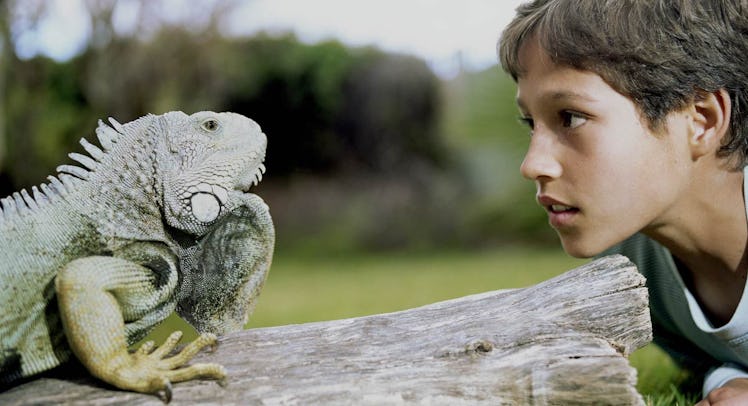Why Kids Loving Animals Is Increasingly Bad For The Environment
Say it ain't so Mr. Fox!

You already know that your kid’s love is one of the most powerful forces in the universe. You see its effect every time you willingly touch poop or start bawling at a terrible preschool recital. In fact, according to new research from North Carolina State University, that love may have the power to devastate whole ecosystems.
In a study published in the journal Environmental Conservation, researchers sought to understand how geography affects the next generation’s conservation priorities. They approached the problem by conducting a parallel survey of 2 groups of kids who were asked about their favorite animals. One group was located in wilds of North Carolina while the other group called a Bahaman island home. The results? Great news for feral pigs, bad news for island ecosystems.
Kids Could Cuddle Disaster
Bahamian children, it turns out, have a strong affection for invasive species that could potentially devastate island ecosystems. Among these favorites were feral dogs, cats, and pigs transported to the islands by mariners. That said, they also have an affinity for a greater diversity of animals (many native to the island) including flamingoes and rock iguanas.
Meanwhile, the North Carolina kids displayed a much stronger preference primarily for the furry creatures of the world. Those creatures included deer, bears, and rabbits, all known to science as “charismatic megafauna” (which is now the only appropriate term for John Goodman). The N.C. children preferred a less diverse range of species.
The conclusion: these preferences, particularly on islands, could hamper efforts to control the invasive species so adored by kids. After all, a crying child would stop anyone from killing Porky the Island Pig. (Unless you’re a monster.) Researchers stressed the need to educate the public education about losing key species — regardless of geography. “The better understanding the public has, the more likely we are to base our priorities on sound science,” explained co-author Nils Peterson, Associate Professor at NC State’s College Of Natural Resources.
Cute Invaders
This is of particular concern as the introduction of invasive species increases globally. In a recent study in the journal Nature Communications, researchers found that 37 percent of known alien species were introduced as recently as the 1970s. At its peak in 1996, one or more invasive species was being introduced to alien habitats every day.
So what are the cuddliest invasive species your kid might love and cause irreparable harm to future efforts to control them? Here are a few of the most huggable:
Red Foxes
They are storybook favorites — eminently full of fluff and disastrous for small mammalian and bird species in the temperate forests of North America. It also doesn’t help that they remind you of George Clooney.
Nutria
If you live around the Louisiana bayou, you’re no fan of the swamp-destroying Nutria. But these critters have found homes as far afield as Oregon. If you put aside that their ability to destroy whole habitats, they look like cute AF giant gerbils. Bonus for the conservation effort: they’re apparently delicious.
Monk Parakeets
This Southern invasive species is a sight to behold. Sadly, you won’t be able to behold them for long because their massive nests wreak havoc with electrical infrastructure. One minute your kid is saying “Look at those pretty birds,” the next your neighborhood is plunged into terrifying darkness.
This article was originally published on